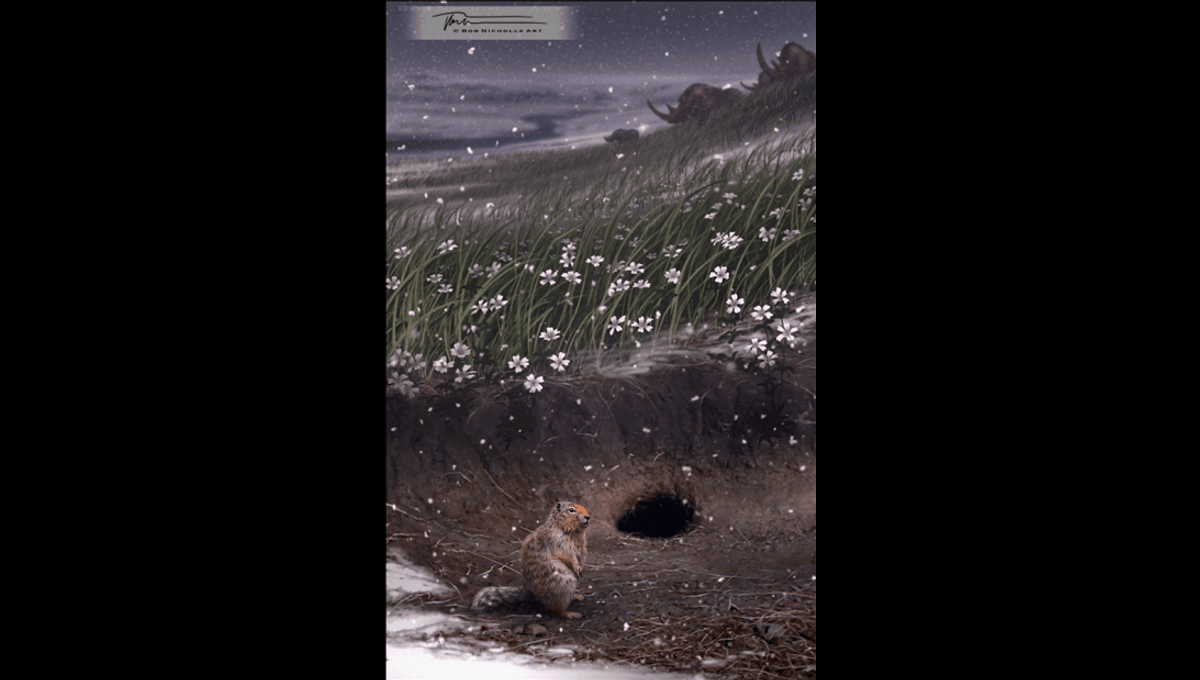-
أخر الأخبار
- استكشف
-
الصفحات
-
المدونات
-
المنتديات
The Ice Age Squirrel That Enabled A Plant’s Resurrection 31,800 Years Later

The Ice Age Squirrel That Enabled A Plant’s Resurrection 31,800 Years Later
Ice Age (as in the movie) tells the heartwarming tale of a mammoth, sloth, and saber-toothed cat that – against the odds – work together to protect a baby human. There was, however, another star who really stole the show: Scrat, the Ice Age squirrel.
The rest of this article is behind a paywall. Please sign in or subscribe to access the full content. We follow Scrat’s endless quest to secure some kind of Ice Age acorn, something extant squirrels do today to keep themselves stocked up on food. One, however, took it that bit further, as the impressive cache of ancient seeds frozen in its burrow enabled scientists to resurrect a plant over 31,000 years later (where’s their movie?). A great account of this discovery features in The Secret Lives Of Dinosaurs, a new book from palaeontologist, author, and science communicator Dr Dean Lomax (of recent “Sword Dragon of Dorset” fame). It all centers around an Arctic ground squirrel (thought to be Urocitellus parryii, as reimagined by palaeoartist and sculptor Bob Nicholls) and the burrow it built around 31,800 years ago. A huge cache of seeds and fruits from the ~25,000-30,000-year-old mammoth steppe of the Yukon region, Canada, which was created by an Arctic ground squirrel. Image courtesy of Scott Cocker and via The Secret Lives of Dinosaurs and Dr Dean Lomax The burrow was discovered in Siberia along the bank of the Kolyma River, locked in frozen permafrost sediments. Other impressive finds from the sediments included mammoths, woolly rhinos, and bison, but there was a particularly exciting discovery of some very old seeds. Tucked in the storage chambers of our Ice Age squirrel’s burrow, scientists found between 600,000–800,000 frozen seeds. It got them wondering: Could they still be viable? The burrow was discovered in Siberia along the bank of the Kolyma River, locked in frozen permafrost sediments. Other impressive finds from the sediments included mammoths, woolly rhinos, and bison, but there was a particularly exciting discovery of some very old seeds. Image courtesy of Yashina et al. 2012. “Regeneration of whole fertile plants from 30,000-y-old fruit tissue buried in Siberian permafrost”. PNAS, 109, 4008–4013 via The Secret Lives of Dinosaurs and Dr Dean Lomax Despite previous failed attempts, the team behind a 2012 paper were successful and grew mature plants that were able to produce flowers, fruits, and even more seeds. It was first identified as Silene stenophylla, then most recently as Silene linnaeana, both of which still grow today in the Arctic tundra of Siberia. “I remember hearing about this discovery when it was originally announced,” said Lomax to IFLScience. “I was blown away. I knew there had been attempts to regenerate Ice Age fossil seeds and fruits before, but never in this way. It all felt very ‘Jurassic Park’, albeit with Ice Age plants. Cool in every sense of the word.” So, Ice Age is a documentary, and squirrels are helping scientists to resurrect ancient plants, but does this mean that fossilized plant matter has the potential to go back even further? Could we, with the right discovery, bring back a plant that dinosaurs were feeding on? Unfortunately, the answer is a definitive no. “The deeper in time we go, and especially to the dinosaur-dominated Mesozoic Era, essentially means that we’re no longer dealing with ice age preservation,” said Lomax. “There is no way we could ever find dinosaur-era plants frozen in this way.” “I guess the closest you’d come to this is finding exceptional plants in amber, but even then, they’ve been through millions of years of fossilisation. Unlike the frozen seeds, they would not remain fertile.” It’s for that reason that we also won’t ever find a dinosaur frozen in permafrost, much as we might all wish we could. But if it's dinosaur mummies you’re after, well, we’ve got plenty of those.



